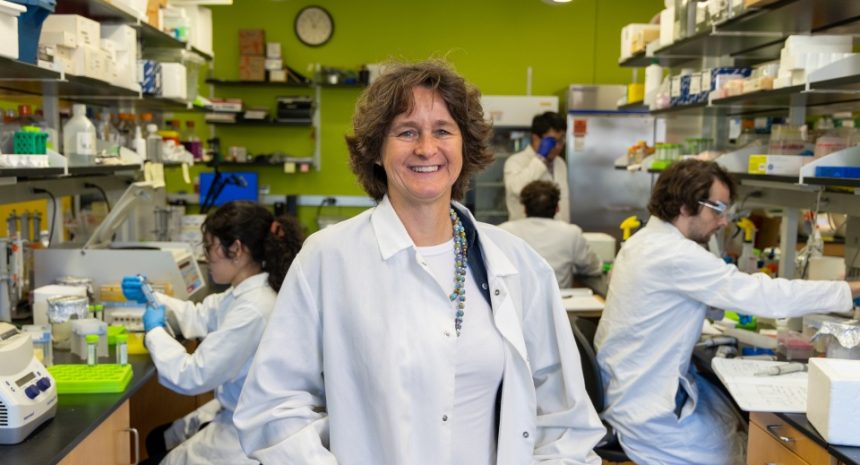A multi-institutional team of researchers, led by Georgia Tech’s Francesca Storici, has discovered a previously unknown role for RNA. Their insights could lead to improved treatments for diseases like cancer and neurodegenerative disorders while changing our understanding of genetic health and evolution.
RNA molecules are best known as protein production messengers. They carry genetic instructions from DNA to ribosomes — the factories inside cells that turn amino acids into the proteins necessary for many cell functions. But Storici’s team found that RNA can also help cells repair a severe form of DNA damage called a double-strand break, or DSB.
A DSB means both strands of the DNA helix have been severed. Cells have the tools to make some repairs, but a DSB is significant damage — and if not properly fixed can lead to mutations, cell death, or cancer. (Interestingly, cancer treatments, like chemotherapy and radiation, can cause DSBs.)
Storici, a professor in the School of Biological Sciences, has dedicated her research to studying the molecules and mechanisms underlying damaged DNA repairs. Ten years ago, she and collaborators discovered that RNA could serve as a template for DSB repair.
“Now we’ve learned that RNA can directly promote DSB repair mechanisms,” said Storici, whose lab teamed with mathematics experts in the lab of Nataša Jonoska from the University of South Florida. They’re all part of the Southeast Center for Mathematics and Biology based at Georgia Tech. They explain their discovery in the journal Nature Communications.
“These findings open up a new understanding of RNA’s potential role in maintaining genome integrity and driving evolutionary changes,” added Storici.
The researchers used variation-distance graphs to visualize millions of DSB repair events, offering a comprehensive snapshot of sequence variations. The graphs highlighted major differences in repair patterns, depending on the DSB position.
This mathematical approach also uncovered significant differences in repair efficiency, pointing to RNA’s potential in modulating DSB repair outcomes.
“These findings underscore the critical role of mathematical visualization in understanding complex biological mechanisms and could pave the way for targeted interventions in genome stability and therapeutic research,” said Jonoska.
Molecular Grunt Work
When a DSB happens in DNA, it’s like a load-bearing beam in a building breaking. A careful, precise repair is needed to ensure the building’s — or the DNA’s — stability. The pieces must be rejoined accurately to prevent further damage or mutation. Repairing a damaged building requires having a reliable foreman on the job site. A DSB requires something very similar.
“A key mechanism we identified is that RNA can help position and hold the broken DNA ends in place, facilitating the repair process,” explained Storici, whose team conducted the research in both human and yeast cells.
Specifically, they found that RNA molecules and the broken section of DNA can match up like puzzle pieces. When RNA has this kind of complementarity with the DNA break site, it acts as a scaffold, or a guide, beyond its traditional coding function, showing the cellular machinery where to make repairs. Over millennia, cells have evolved complex mechanisms to fix DSB, each of them functioning like different tools from the same toolbox.
Storici’s team showed that RNA can influence which tools are used, depending on its complementarity to the broken DNA strands. This means that in addition to being the important protein production messenger, RNA acts as both a foreman and laborer when it comes to DNA repair.
A deeper understanding of RNA’s role in DNA repair could lead to new strategies for strengthening repair mechanisms in healthy cells, potentially reducing the harmful effects of treatments like chemotherapy and radiation.
“RNA has a much broader function than we knew,” Storici said. “We still have a lot of research to do into these mechanisms, but this work opens up new ways for exploring how RNA could be harnessed in healthcare, potentially leading to new treatments for cancer and other genetic diseases.”
As Storici and other researchers continue probing RNA’s effects in DNA repair, their revelations could have a lasting impact on human health and evolution. That means better gene therapies, new cancer treatments and anti-aging strategies — and also the ability to influence how organisms adapt and evolve.
Source: Georgia Institute of Technology.
Published on November 28, 2024


